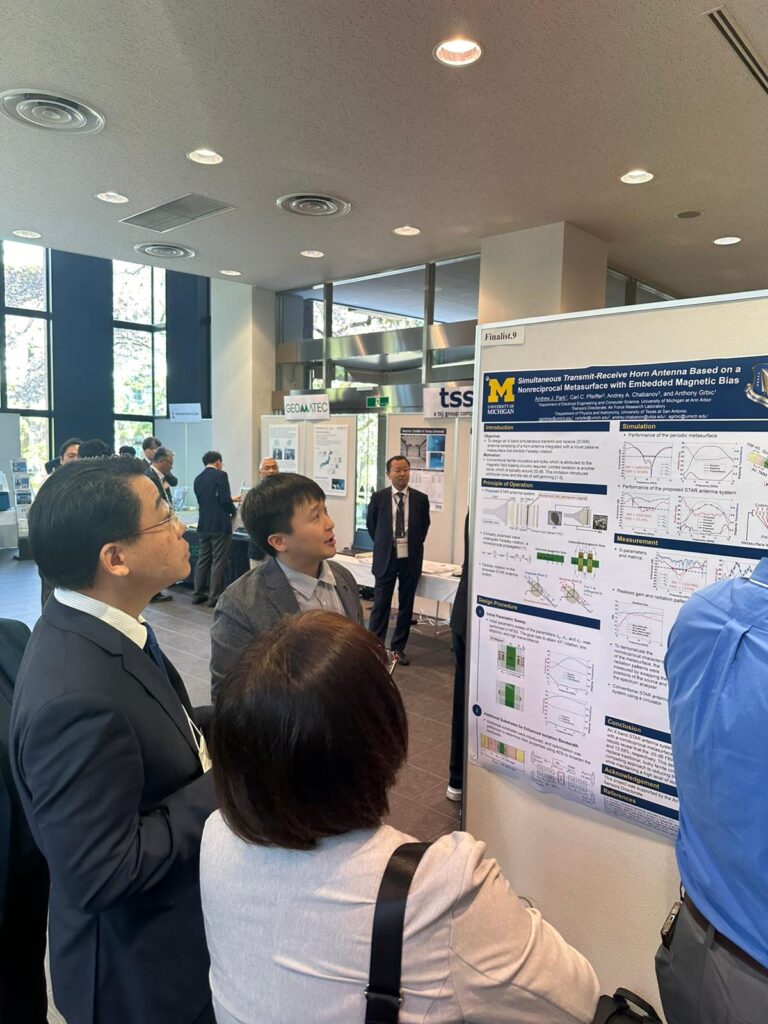Andrew Park wins iWAT Student Paper Award for work on STAR antennas

Andrew Park, PhD student in Electrical and Computer Engineering (ECE), presented a poster on his paper Simultaneous Transmit-Receive Horn Antenna Based on a Nonreciprocal Metasurface with Embedded Magnetic Bias, at the 2024 IEEE International Workshop in Antenna Technology (iWAT). The paper, coauthored with Carl C. Pfeiffer, Andrey A. Chabanov, and Anthony Grbic, won the iWAT Student Paper Award.
“The conference was great because I had the chance to interact with various people from around the world and learn about their advances in antennas,” Park said, “Sendai, Japan, was a peaceful and beautiful city, full of cherry blossoms.”

In the presented work, Park and coauthors introduced a new simultaneous transmit and receive (STAR) antenna that addresses some of the technical challenges of traditional designs.
STAR antennas can send and receive signals on the same frequency at the same time, allowing for efficient usage of signal bandwidth and fast data transmission. However, these antennas tend to be large and bulky, due to the ferrite circulators they employ, and often exhibit interference between incoming and outgoing signals.
To overcome these challenges, Park and PhD advisor Grbic, John L. Tishman Professor of Engineering, integrated a horn antenna with a nonreciprocal metasurface that exhibits Faraday rotation.
“Since the circulator design is embedded within the metasurface, the STAR antenna system can be made quite compact by simply attaching the metasurface to an antenna,” explained Park. “This work offers a compelling approach to reducing the overall size of STAR antenna systems.”
This improved STAR antenna, whose development was supported by the Air Force Research Laboratory Sensors Directorate, works at X-band frequencies: a frequency band centered around 10 GHz. STAR antennas in this frequency range can be used for communications or remote sensing.
Park attributes much of his success in winning the Student Paper Award to the support of his colleagues in ECE. He studied many of the measurement techniques used to characterize the STAR antenna in Prof. Kamal Sarabandi’s EECS 533 Microwave Measurements Laboratory course, with the additional help of his GSIs and Park’s fellow research group members. He also received feedback on his poster from multiple research groups in ECE, transforming his poster into its award-winning final version.
“I am really thankful to work in this great research group,” he said, “I sincerely appreciate everyone’s time and effort in helping me win the award.”
Continuing this work, Park aims to integrate the metasurface with an active electronically scanned array (AESA) to enable simultaneous transmit and receive for radar technologies and communications.
 MENU
MENU 
